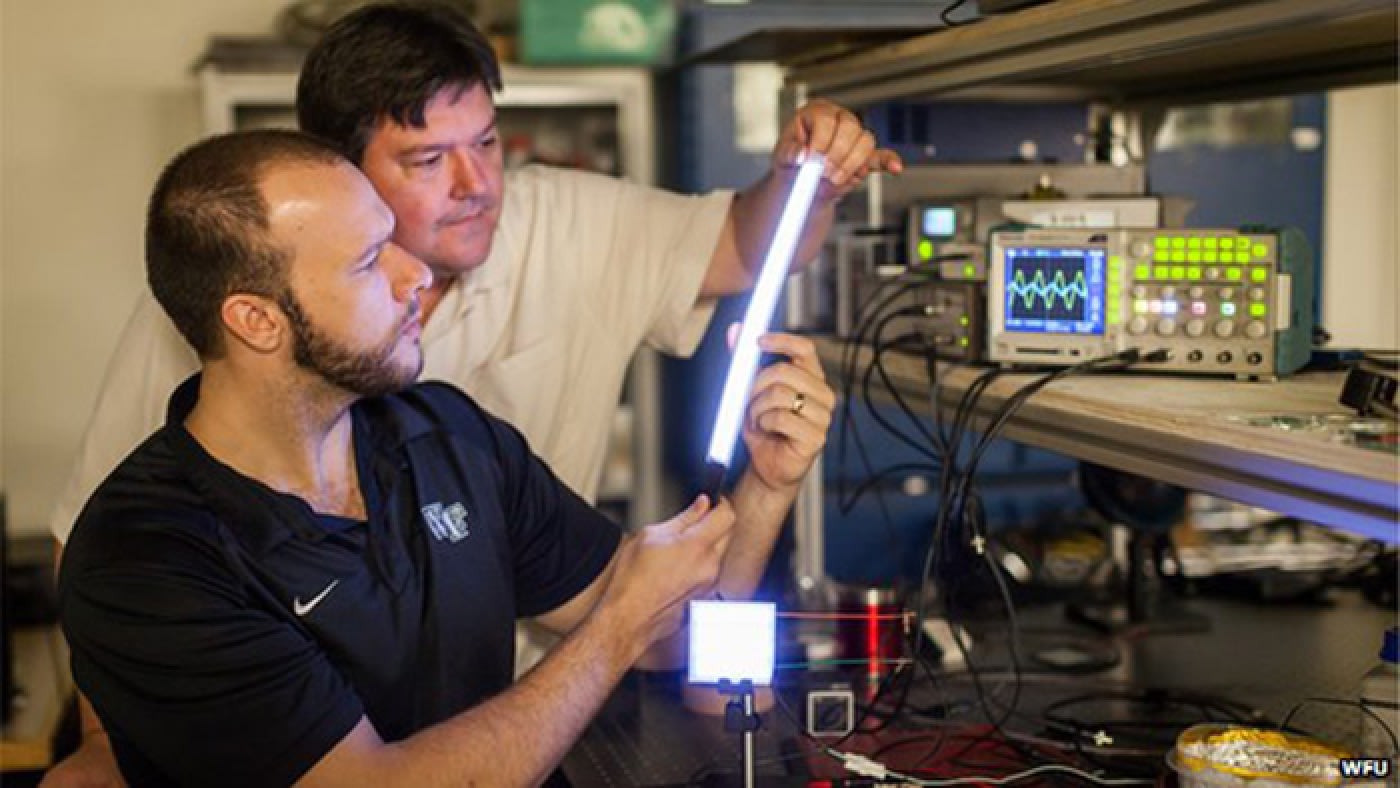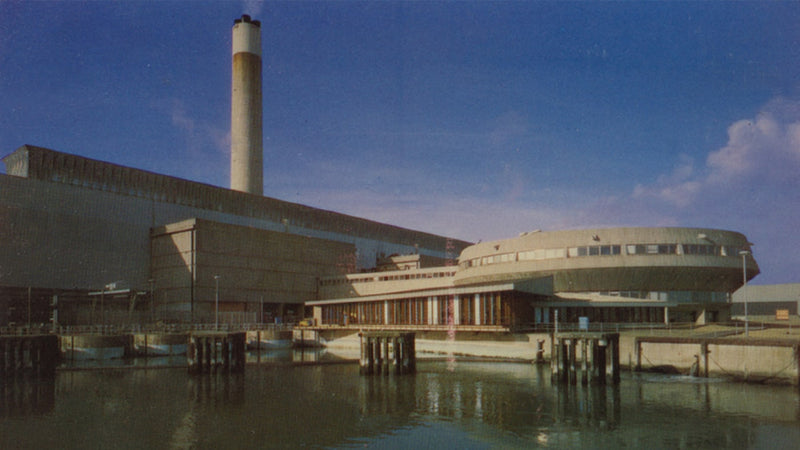
Fipel Technology

Scientists in Wake Forest University in North Carolina have developed an alternative to fluorescent lighting using polymers.
Professor Dr David Carroll and his team have created a light source from passing electricity through white polymers that contain a small amount of nanomaterials which glow with the electric current.
The light produced can be manipulated to replicate the solar light from the sun. This is a far better/nicer light than the bluish light given off by the fluorescent equivalent.
I think the most interesting aspect of this discovery is that because the light bulb is essentially plastic the light source can be made into any shape! This could have some really interesting architectural applications.
Via: BBC
Credit: WFU
You might also like
Fawley Power Station: Salvaging Vintage Lights from an Industrial Icon.
The vintage lights we’ve salvaged from the now demolished Fawley Power Station are ingrained with the iconically industrial story of their birthplace. Join us on our journey through this exceptional site.
Lighting HistoryLights lost in history: Tales from the Eastern Bloc
There's a fascinating history and heritage behind the lights we salvage. Join us on a journey to the Eastern Bloc.
Join us at Heal’s Festival of Light
Showcasing an exciting collection of new vintage lighting finds, online and in-store at Heal's Festival of Light this 11-31 October.
News






